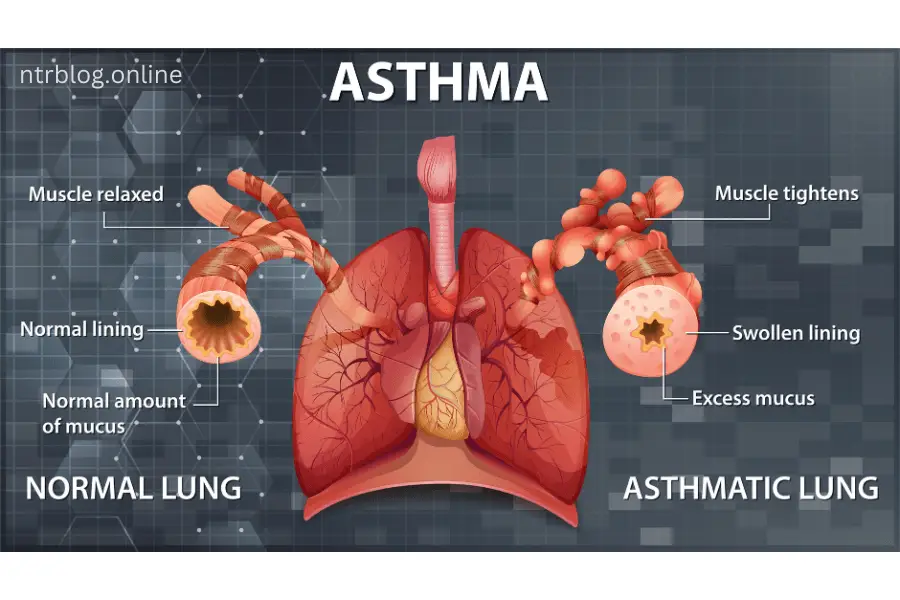Table of Contents
- Bipolar disorder is a long-term mental health condition marked by dramatic shifts in mental health, behaviour, mood, and energy. People with this disorder often experience extreme mood swings, including manic and hypomanic episodes, as well as periods of depression. Though challenging, bipolar disorder can be managed through medication, therapy, and lifestyle adjustments.
Understanding Bipolar Disorder:
- Bipolar disorder, once called manic-depressive illness, is a chronic condition characterized by significant mood swings. These mood changes can vary in duration and intensity, disrupting daily life and normal functioning. The disorder presents in various forms, each with distinct patterns of mood episodes.
Manic Episodes:
- In bipolar I disorder, manic episodes are a hallmark. To be diagnosed, a person must have experienced at least one episode of mania, which lasts a week or longer, characterized by an abnormally elevated or irritable mood, heightened energy, and often risky behaviors. Manic episodes can severely impact a person’s social, professional, and personal life, sometimes leading to hospitalization. During these episodes, individuals might engage in reckless activities, such as excessive spending or dangerous driving, and may experience psychosis, including hallucinations or delusions, complicating the diagnosis.
- Bipolar II disorder involves hypomanic episodes, which are less severe than manic episodes and don’t last as long. However, these episodes still present noticeable changes in mood and behavior.
Depressive Episodes:
- Depressive episodes in bipolar disorder involve prolonged periods of low mood and disinterest in activities once enjoyed. Symptoms often include fatigue, changes in appetite, and feelings of hopelessness. These episodes can be debilitating and are a significant aspect of both bipolar I and bipolar II disorders.
Evolution of the Term “Bipolar Disorder“
- The term “manic-depressive illness” has largely been replaced by “bipolar disorder” for clarity and to reduce stigma. Historically, “manic depression” covered a broad spectrum of mood disorders, leading to confusion. Modern diagnostic criteria in tools like the DSM have refined the definitions, and “bipolar disorder” now more accurately describes the condition without the negative connotations associated with “mania” and “depression.”
Types of Bipolar Disorder:
Bipolar disorder manifests in several forms:
- Bipolar I Disorder: Characterized by at least one manic episode, often accompanied by depressive episodes. Mixed episodes, involving both manic and depressive symptoms, can also occur.
- Bipolar II Disorder: Defined by depressive episodes and hypomanic episodes, without full-blown mania. Although hypomania is less intense, bipolar II is often more disruptive due to frequent depressive episodes.
- Cyclothymic Disorder (Cyclothymia): Involves chronic mood instability with numerous periods of hypomanic and mild depressive symptoms lasting for at least two years. Periods of normal mood (euthymia) are brief.
- Other Specified and Unspecified Bipolar Disorders: For individuals who experience significant mood disturbances that don’t meet the criteria for the other types.
Distinguishing Bipolar Disorder from Borderline Personality Disorder (BPD):
- Though bipolar disorder and borderline personality disorder (BPD) share some symptoms, they are distinct. BPD involves rapid mood changes and impulsive behaviors often triggered by interpersonal conflicts. In contrast, bipolar disorder features longer-lasting mood episodes influenced by various factors like sleep, stress, and substance use.
Who is Affected by Bipolar Disorder?
- Bipolar disorder can affect anyone, typically starting in early adulthood, though it can begin in childhood or later in life. The disorder affects people of all genders equally but manifests differently. Women often experience more rapid mood cycling and more depressive episodes, possibly due to hormonal influences and medication patterns.
Prevalence of Bipolar Disorder:
- In the United States, bipolar disorder affects approximately 5.7 million adults, or about 2.6% of the population. Recognizing and understanding this condition is crucial for managing its impact on individuals and their families.
Symptoms and Causes of Bipolar Disorder:

Recognizing the Signs and Symptoms:
- Bipolar disorder manifests through a range of symptoms that vary significantly among individuals. The most prominent feature of bipolar I disorder is a manic episode lasting at least one week. In bipolar II disorder and cyclothymia, hypomanic episodes are more common.
- People with bipolar disorder often experience both manic/hypomanic and depressive episodes. These mood changes can occur without a set pattern, and depression doesn’t always follow a manic phase. Sometimes, an individual may experience the same mood state repeatedly before shifting to the opposite mood. The duration of these mood changes can span weeks, months, or even years.
Manic Episodes:
- Manic episodes are characterized by sustained and intense mood changes that differ significantly from a person’s usual behavior. These episodes may last for several days or weeks. Common symptoms include:
- Extreme happiness, optimism, and excitementRapid mood swings, from joy to anger or hostilityRestlessness and increased physical activityRapid speech and racing thoughtsElevated energy levels with a reduced need for sleepImpulsivity and poor decision-making, such as quitting a job suddenlyGrandiose plans or unrealistic goalsRisky behaviours, such as substance abuse or unsafe sexFeeling unusually important, talented, or powerful
- Severe manic episodes can include psychosis, with hallucinations or delusions
- People in a manic state often do not recognize the negative consequences of their actions. Manic episodes can also increase the risk of suicide, requiring hospitalization for severe cases to ensure safety.
Hypomanic Episodes:
- Hypomania involves milder symptoms compared to full-blown mania. Individuals may feel particularly good and productive, and their functioning in social or work situations may remain relatively intact. However, close friends and family might notice unusual mood and activity changes. Following a hypomanic episode, severe depression can often occur.
Depressive Episodes:
- Depressive episodes in bipolar disorder mirror those of major depression, including symptoms such as:
- Profound sadness
- Fatigue and low energy
- Lack of motivation
- Feelings of hopelessness or worthlessness
- Loss of interest in previously enjoyable activities
- Difficulty concentrating and making decisions
- Uncontrollable crying
- Irritability
- Increased need for sleep or insomnia
- Appetite changes leading to weight loss or gain
- Suicidal thoughts
Mixed Episodes:
- Mixed episodes present a combination of manic and depressive symptoms. Individuals may feel agitated and energetic while also experiencing the negative emotions and thoughts associated with depression. These episodes are often described as the most challenging aspect of bipolar disorder.
Causes of Bipolar Disorder:
The exact cause of bipolar disorder is still unknown, but several factors are believed to be responsible for it:
- Genetic Factors: Bipolar disorder has a strong hereditary component, with more than two-thirds of affected individuals having at least one close relative with the condition. However, having a relative with bipolar disorder does not guarantee development of the disorder.
- Brain Changes: Subtle differences in brain structure or function have been identified in people with bipolar disorder, though brain scans alone cannot diagnose it.
- Environmental Factors: Stressful life events, such as the loss of a loved one, serious illness, divorce, or financial troubles, can trigger mood episodes and may play a role in the disorder’s development.
Diagnosis and Tests for Bipolar Disorder:
How is Bipolar Disorder Diagnosed?
- Diagnosing bipolar disorder involves a comprehensive evaluation by a healthcare provider, utilizing various tools and methods to ensure an accurate diagnosis. Here’s how the process typically unfolds:
- Physical Exam: A thorough physical examination helps rule out other conditions that could be causing symptoms similar to those of bipolar disorder.
- Medical History: Your healthcare provider will gather detailed information about your symptoms, personal and family medical history, and your overall health. This includes discussing any past experiences and any patterns in your mood and behavior.
- Medical Tests: Blood tests and other medical tests may be conducted to exclude other medical conditions, such as hyperthyroidism, which can mimic the symptoms of bipolar disorder.
- Mental Health Evaluation: A comprehensive evaluation of your mental health is essential. This may be conducted by your primary healthcare provider or a mental health specialist like a psychologist or psychiatrist. The evaluation includes in-depth questions about your emotional state, behavior, and thinking patterns.
Criteria for Diagnosis:
- To be diagnosed with bipolar disorder, you must have experienced mania or hypomania at least once. Mental health professionals use the Diagnostic and Statistical Manual of Mental Disorders (DSM) as a guide to diagnose and classify the specific type of bipolar disorder based on the pattern and severity of your symptoms.
Associated Mental Health Conditions:
- Bipolar disorder often coexists with other mental health conditions, which can complicate the diagnostic process. Common co-occurring conditions include:
- Anxiety Disorders: Many individuals with bipolar disorder also experience significant anxiety.
- Attention-Deficit/Hyperactivity Disorder (ADHD): ADHD symptoms can overlap with or exacerbate those of bipolar disorder.
- Post-Traumatic Stress Disorder (PTSD): PTSD can coexist with bipolar disorder, adding to the complexity of symptoms.
- Substance Use Disorders: Dual diagnosis of substance use disorders is common, as individuals may use substances to cope with their mood swings.
Challenges in Diagnosis:
- Accurate diagnosis of bipolar disorder can be challenging for several reasons:
- Memory Impairment: During manic episodes, individuals often have impaired memory, making it difficult to recall and report their experiences accurately.
- Misdiagnosis: Severe manic episodes with hallucinations can be mistaken for schizophrenia, while overlapping symptoms can lead to misdiagnosis as borderline personality disorder (BPD).
- Comprehensive Reporting: Being honest and thorough about your symptoms and experiences is crucial. Including input from a loved one who can provide additional perspective on your mental health history can be extremely helpful during the diagnostic process.
Management and Treatment of Bipolar Disorder:
How is bipolar disorder treated?
- Managing bipolar disorder effectively often involves a multi-faceted approach that combines various therapies tailored to the individual’s needs. Here are key components of a typical treatment plan:
- 1.Psychotherapy (Talk Therapy): Engaging in regular sessions with a therapist can help individuals understand and manage their thoughts, emotions, and behaviors.
- 2. Medications: These can include mood stabilizers, antipsychotics, and sometimes antidepressants to help balance mood swings.
- 3. Self-Management Strategies: Learning about the condition and recognizing early signs of mood episodes can empower individuals to manage their symptoms better.
- 4. Healthy Lifestyle Habits: Regular exercise, yoga, and meditation can support overall well-being, though they should complement, not replace, medical treatment.
- 5. Other Therapies: For severe cases or when other treatments are ineffective, electroconvulsive therapy (ECT) may be considered to rapidly control symptoms and prevent harm.
- Bipolar disorder requires ongoing treatment as it’s a lifelong condition. Finding the right treatment plan can take time and persistence, but it’s crucial to stick with it, even if progress feels slow. Episodes of mania and depression may recur, but continuous treatment can help manage and reduce their impact.
- For individuals with co-occurring mental health conditions like anxiety or ADHD, treatment can be more complex. Some medications for these conditions may exacerbate bipolar symptoms, so careful management and coordination with healthcare providers are necessary.
What types of treatment are used to treat bipolar disorder?
- Therapy plays a important role in managing bipolar disorder. Different types of psychotherapy can offer various benefits:
- Psychoeducation: This involves educating patients and their families about bipolar disorder to help them understand and cope with the condition.
- Interpersonal and Social Rhythm Therapy (IPSRT): This therapy focuses on stabilizing daily routines and social rhythms to improve mood and adherence to treatment.
- Family-Focused Therapy: Involves family members in treatment to enhance communication and problem-solving skills, fostering a supportive environment.
- Cognitive Behavioral Therapy (CBT): A structured approach that helps individuals identify and change negative thought patterns and behaviors.
Which medications are used to treat bipolar disorder?
- Medications are essential in managing bipolar disorder. Commonly prescribed drugs include:
- Mood Stabilizers: Such as lithium, valproic acid, and lamotrigine, which help control manic or hypomanic episodes.
- Second-Generation Antipsychotics: Including medications like quetiapine and lurasidone, which can help manage both manic and depressive episodes.
- Antidepressants: Sometimes used in combination with mood stabilizers to treat depressive episodes, though they are not used alone due to the risk of triggering manic episodes.
- It’s vital to communicate with healthcare providers about any side effects or concerns with medications. Never stop taking medication without medical advice, as abrupt changes can cause severe issues.
Which other medical treatments are used for bipolar disorder?
- In addition to standard therapies and medications, other treatments may be considered:
- Electroconvulsive Therapy (ECT): Effective for severe depression or mania when other treatments fail, conducted under anesthesia.
- Transcranial Magnetic Stimulation (TMS): Used for medication-resistant depression, this non-invasive procedure uses magnetic fields to stimulate nerve cells in the brain.
- Ketamine Treatment: Administered intravenously at low doses, ketamine can provide rapid relief from depressive symptoms.
- Hospitalization: Necessary during severe episodes to ensure safety and stabilize symptoms.
What lifestyle changes may help with bipolar disorder?
- Adopting certain lifestyle habits can support the management of bipolar disorder:
- Avoid Alcohol and Drugs: These substances can interfere with treatment and trigger mood episodes.
- Maintain a Mood Diary: Tracking thoughts and behaviors can help identify patterns and triggers.
- Regular Sleep Schedule: Consistent sleep patterns are crucial to preventing mood episodes.
- Exercise: Regular physical activity improves overall mental health and helps manage weight, a common side effect of bipolar medications.
- Meditation: Can aid in reducing depressive symptoms.
- Manage Stress: Healthy stress management and maintaining supportive relationships are essential to reducing mood swings.
Prevention:
Can bipolar disorder be prevented?
- Currently, there’s no definitive way to prevent bipolar disorder due to the uncertainty surrounding its exact cause. However, recognizing the signs and symptoms early and seeking prompt medical intervention can make a significant difference in managing the condition effectively.
Outlook / Prognosis:

What is the outlook (prognosis) of bipolar disorder?
- Without proper treatment, the prognosis for bipolar disorder can be challenging. However, with appropriate medical care, many individuals with bipolar disorder can lead fulfilling and productive lives.
- Bipolar disorder can reduce life expectancy by approximately nine years, and about 20% of individuals with the condition may die by suicide. Additionally, around 60% of people with bipolar disorder struggle with substance abuse. These statistics underscore the importance of seeking and adhering to medical treatment.
- Consistent use of prescribed medications can help manage manic and depressive episodes. Recognizing symptoms and triggers early can lead to more effective treatment, potentially preventing prolonged illness, extended hospitalizations, and reducing the risk of suicide.
Living With:
When should I see a doctor about bipolar disorder?
- If you have been diagnosed with bipolar disorder, regular visits to your healthcare team are crucial to ensure your treatment remains effective. Your healthcare team may include:
- Your primary healthcare provider
- A psychiatrist
- A psychologist or therapist
- A neurologist
When should I seek emergency care for bipolar disorder?
- Immediate medical attention is necessary if you experience any of the following:
- Suicidal thoughts or plans
- Thoughts or plans of harming yourself or others
- Hallucinations or delusions
- Symptoms of lithium toxicity, such as severe nausea and vomiting, intense hand tremors, confusion, and vision changes
- In such situations, call 911 or go to the nearest emergency room to get the help you need.


